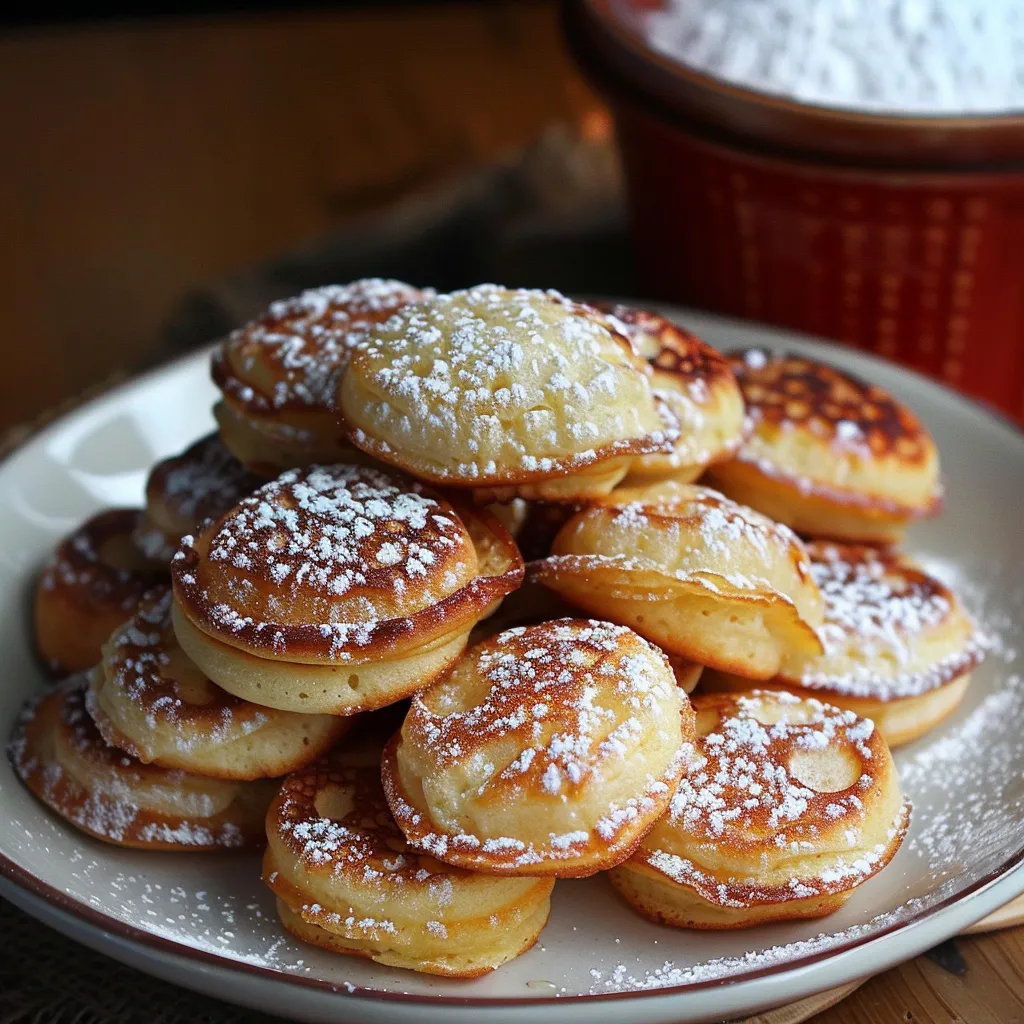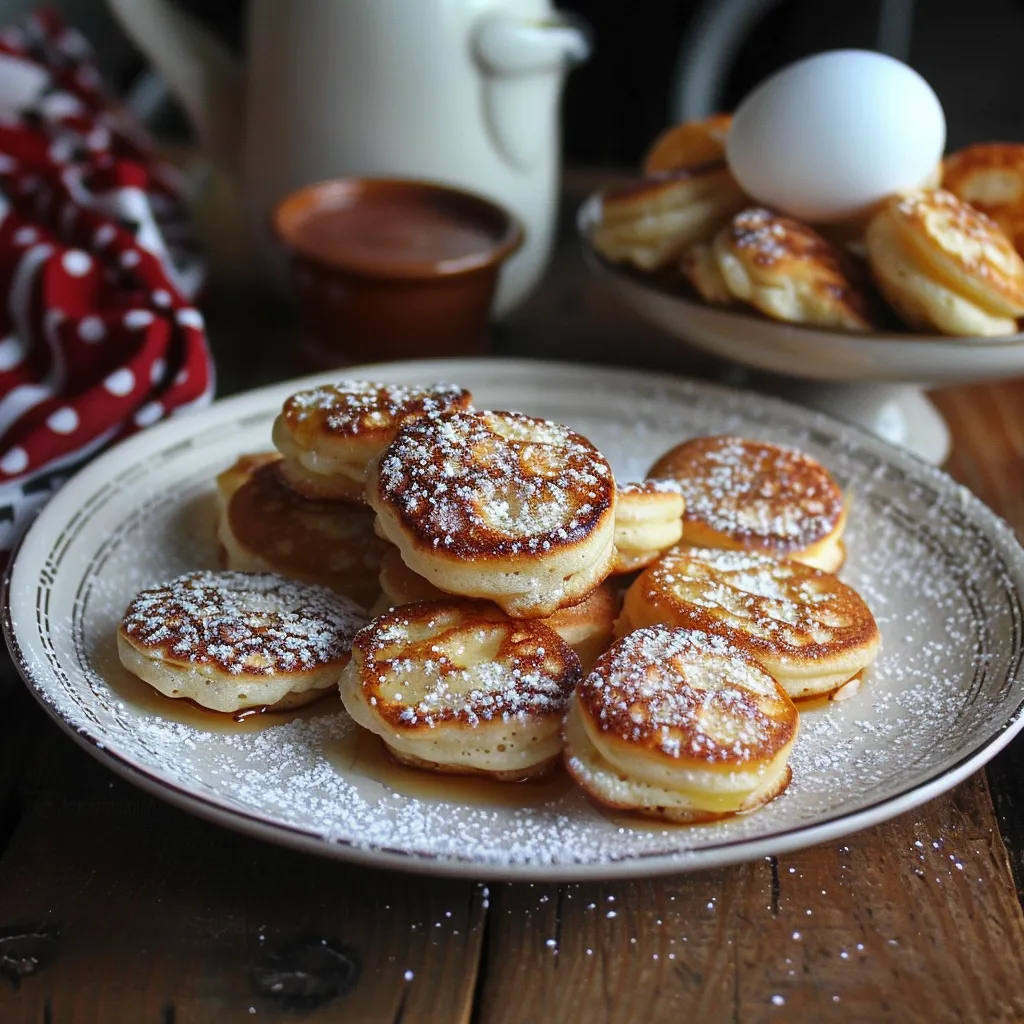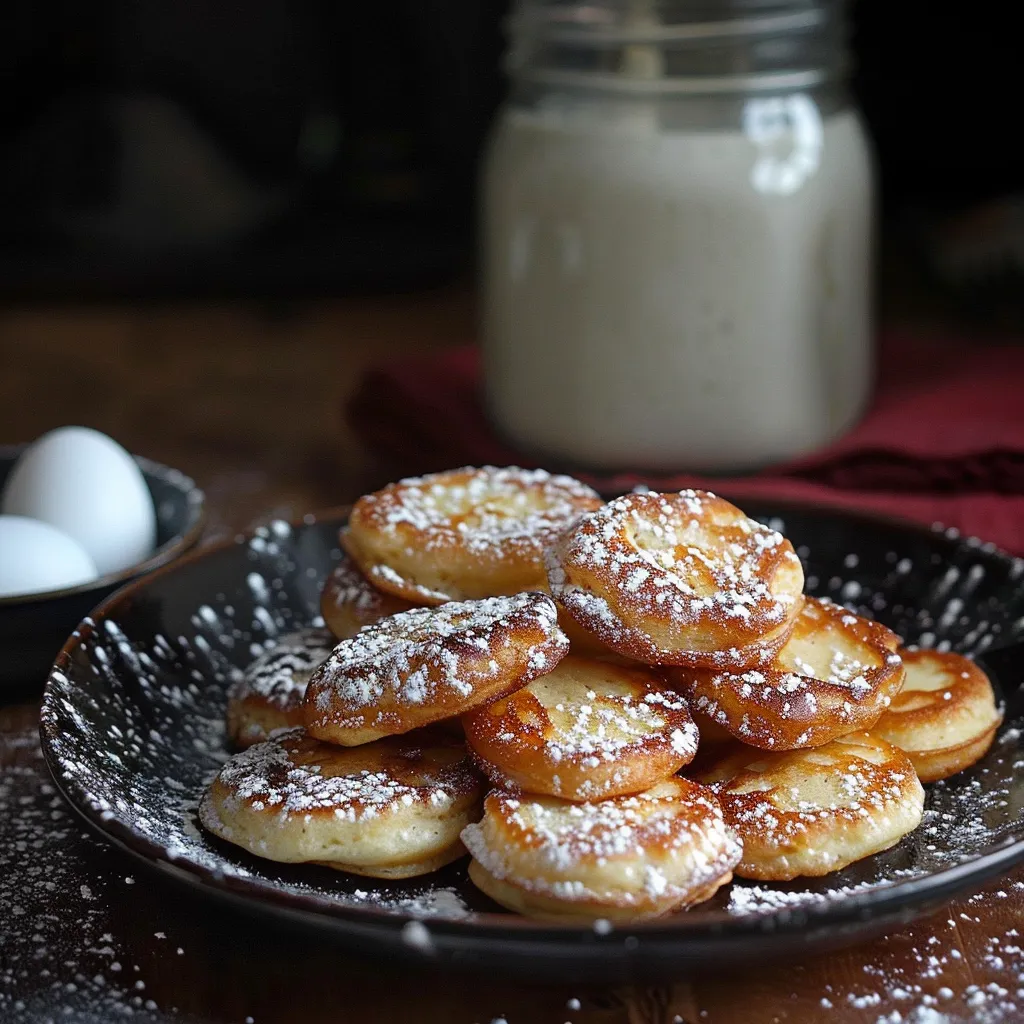 Pin it
Pin it
When you chomp into a fresh poffertje with its dusting of powdered sugar, you'll instantly notice how the crunchy outside meets the soft, fluffy middle. These tiny Dutch treats may look simple, but their yeast-based mix gives them a flavor that sets them apart from regular pancakes. Every nibble offers that perfect mix of sweetness and yeasty goodness that keeps you coming back for more—no wonder they've been a Dutch favorite for hundreds of years.
I started making these after a trip to Amsterdam where I watched street vendors whip them up super fast. My first try turned out a bit wonky but tasted amazing, and now we can't imagine our Saturday mornings without them. There's something special about seeing family grab seats at the table, each adding their own favorite toppings to their poffertjes.
Key Ingredients and Shopping Advice
- Yeast: Go with active dry yeast for this recipe. Double-check it's not expired since old yeast won't bubble up properly.
- Milk: Whole milk gives the best taste, though 2% works fine too. Warm it to around 110°F—any hotter will wreck the yeast, any cooler won't wake it up.
- Flour: All-purpose flour works great for the right texture. Want to make it more traditional? Swap out a quarter of the flour for buckwheat flour.
- Butter: Pick unsalted butter for the mix and for greasing your pan. Fancy European butter with extra fat makes them even tastier.
 Pin it
Pin it
Step-by-Step Cooking Guide
- Wake Up the Yeast:
- Mix 2¼ tsp active dry yeast with 1 tbsp sugar in a big bowl. Heat 1½ cups milk to 110°F and pour it over the yeast mix. Wait 5-10 minutes until it gets foamy.
- Mix Your Batter:
- Throw in 2 cups all-purpose flour, 1 beaten egg, and ¼ tsp salt. Stir until smooth with no lumps left.
- Let It Grow:
- Cover your bowl with a kitchen towel and put it somewhere warm for 45-60 minutes until the batter doubles in size.
- Get Your Pan Hot:
- Heat up a poffertjes pan, aebleskiver pan, or regular non-stick pan on medium heat. Add plenty of butter to each little hole.
- Add Your Batter:
- Pour batter into each spot, filling them about ⅔ full. A squeeze bottle or small spoon gives you better control.
- Watch Them Cook:
- Look for little bubbles on top after about 1-2 minutes. The edges should look set and the bottoms should be golden.
- Flip Them Over:
- Use a chopstick or wooden skewer to turn each poffertje. A gentle flip works best.
- Cook the Other Side:
- Let them cook another 1-2 minutes until the second side turns golden brown.
- Eat Them Hot:
- Move them to a warm plate, sprinkle lots of powdered sugar on top, and add a small piece of butter.
My first try at making poffertjes taught me you can't rush the yeast. I tried to speed up the rising and ended up with flat, heavy pancakes instead of puffy ones. Now I know that giving the dough enough time to rise is what creates that amazing fluffy texture.
Getting the heat just right makes a huge difference. If it's too hot, you'll burn the outside while the middle stays raw. If it's too cool, they'll soak up too much butter and get soggy instead of crispy around the edges. Medium heat seems to work best, letting them cook all the way through while getting that perfect golden color.
The time you let the batter rise builds up the flavor. You might want to add vanilla or other stuff, but real poffertjes get their taste just from properly fermented yeast. This subtle but complex flavor is what makes them different from regular pancakes.
You can top these in so many ways while still keeping it traditional. The classic Dutch way is powdered sugar and butter, but fresh berries, maple syrup, or warm honey taste amazing too.
You'll get better with each batch you make. The special flipping move that gives them their shape takes practice. Don't worry if your first few batches look weird—even oddly shaped poffertjes taste great!
These cute little pancakes go way back to the 1700s in the Netherlands, when folks made them with buckwheat flour. They started out as treats at church events and markets, but now they're popular street food and a family cooking tradition all over the country.
The best thing about poffertjes is how they bring people together. In Dutch culture, nobody eats them alone—people enjoy them at markets with friends or make them at home when family gets together.
I like to serve poffertjes as a fun breakfast or dessert. I put them on a big plate in the middle of the table with different toppings around them—powdered sugar, cut-up strawberries, chocolate sauce, and whipped cream—so everyone can make their own perfect combo.
Seeing people's happy faces when they try these fluffy bites for the first time makes cooking worthwhile. These little pancakes might be small, but they create big memories around the dinner table.
 Pin it
Pin it
Frequently Asked Questions
- → Do I really have to use the special pan?
- Yep, a special dimpled pan, often called a Poffertjes or Aebleskiver pan, is key for their signature puffy look. You can improvise with a skillet, but the results won’t look quite the same.
- → Can the batter sit overnight?
- Sure thing! Let it slowly rise in the fridge—this deepens the flavor. Before cooking, let it come to room temp for around 30 minutes.
- → How do I turn them perfectly?
- Use a skewer or toothpick to gently flip them once the edges start to set. This way, you’ll get that cute round puff shape.
- → What are some fun toppings?
- Butter and powdered sugar are the go-to toppings, but they’re also amazing with syrup, chocolate, fresh fruit, whipped cream, Nutella, or a little cinnamon.
- → Why do mine lose their shape after cooking?
- They might deflate if the batter’s overmixed, the yeast is too old, or the pan isn’t hot enough. Stick to gentle mixing, fresh yeast, and preheat the pan well.
